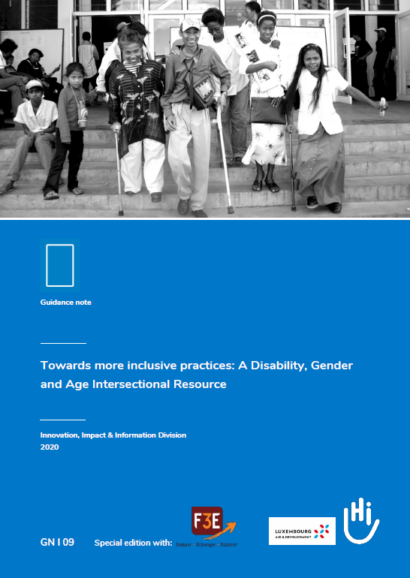
This resource supports international development program staff to better understand the intersection between gender and disability, as well as touching on age. It provides numerous case studies that help to articulate the added value of an intersectional approach, and how this can be approached and embedded throughout international development programs and throughout all processes (from design to evaluation). It also discusses how to identify and work within existing social norms, through empowerment and participation as key strategies to change power relations, to create positive outcomes for women and girls with disabilities. The annex documents provide a Theory of Change that lists examples of activities that can be undertaken to address barriers.




